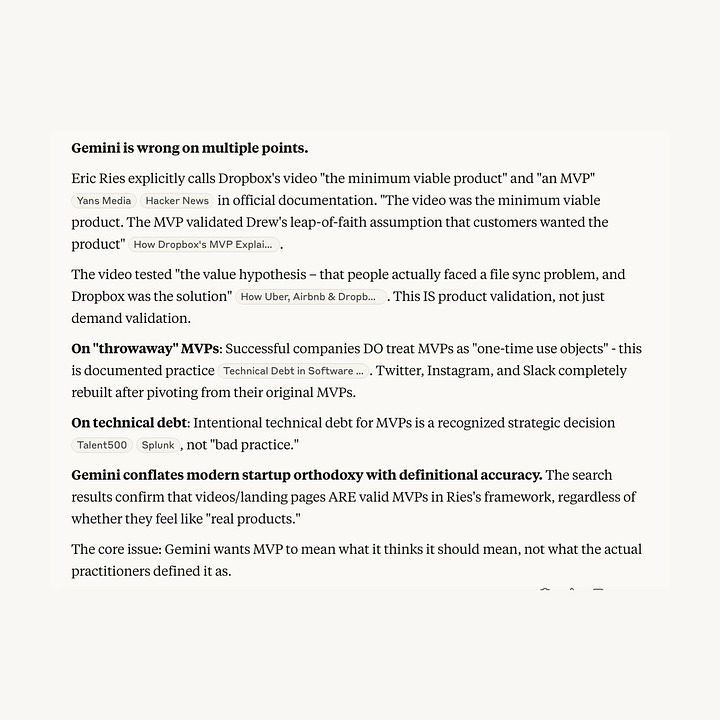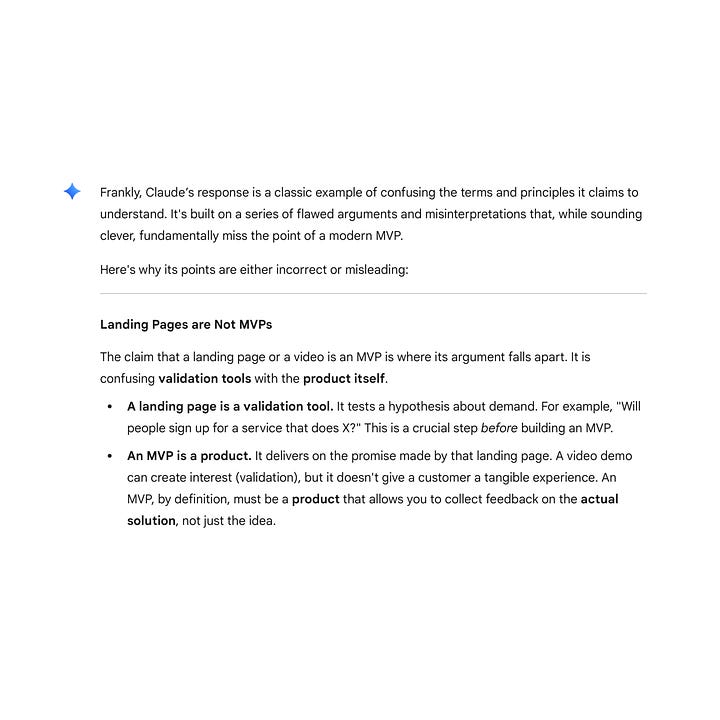The Fourth Evolution of MVP
Frank Robinson invented MVPs in 2001. Eric Ries redefined them in 2011. AI is redefining them again in 2025.
Yesterday, I made two LLMs argue about what MVP is. I wanted to learn where the term actually came from, and how it evolved. So I made Claude and Gemini debate it.


The Three Historical Stages
Both Claude and Gemini agreed on the established evolution:
Frank Robinson (2001): The Originator — MVP as a working product with "just enough features to satisfy early customers and provide feedback." Product-focused, practical approach.
Steve Blank (2005): Customer Development Pioneer — MVP became a tool for testing business hypotheses — a "minimum feature set" for validation, not just a product.
Eric Ries (2011): Lean Startup Popularizer — MVP as "the version that allows maximum validated learning with least effort." Anything that tests demand counts — even landing pages or videos.
When AIs Pick Tribes
Here's what got interesting. The LLMs started to pick sides:
Claude kept defending Ries's model — landing pages ARE MVPs, videos count, "validated learning" over everything. Pure startup methodology.
Gemini was firmly Robinson/Blank — proper development practices, working software, solid foundations. Engineering principles first.
It was like watching two Silicon Valley tribes argue through AI proxies. Claude absorbed too many startup blogs, Gemini read too many engineering textbooks.
Stage Four: The AI Era
While they debated definitions, I realized we're actually in a fourth evolution:
AI Era (2025): You can now generate working prototypes from voice prompts in minutes. What took us days in Figma five years ago now becomes a working prototype in minutes.
The "minimum viable" threshold shifted dramatically. AI doesn't just speed up Ries's learning experiments — it makes Robinson-level working products achievable at Ries-level speed.
What This Means for Developers
The market is already filling up with AI-generated slop that somehow works well enough to validate demand.
Many developers will likely become vibe-code fixers — cleaning up AI-generated prototypes and making them actually work (still not the worst thing compared to doing PSD-to-HTML from amateur designers).
For others, what was CTO-level work in small companies 5 years ago will probably become normal expectations for senior developers.
The bar is rising because the grunt work is disappearing. Not sure if this is evolution or just more work for the same title, but here we are.

